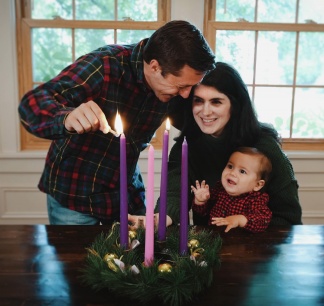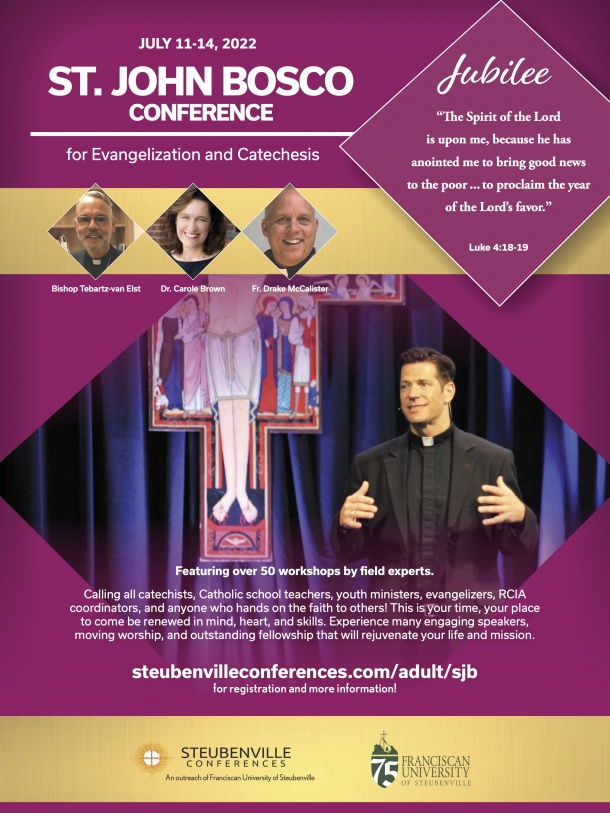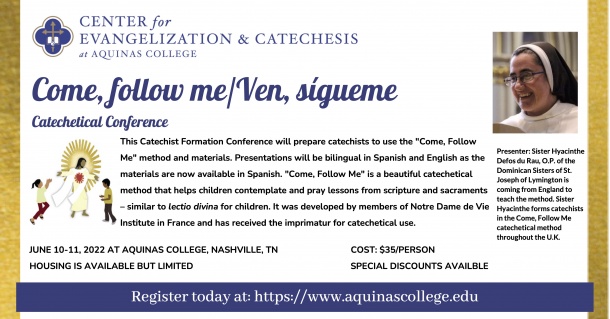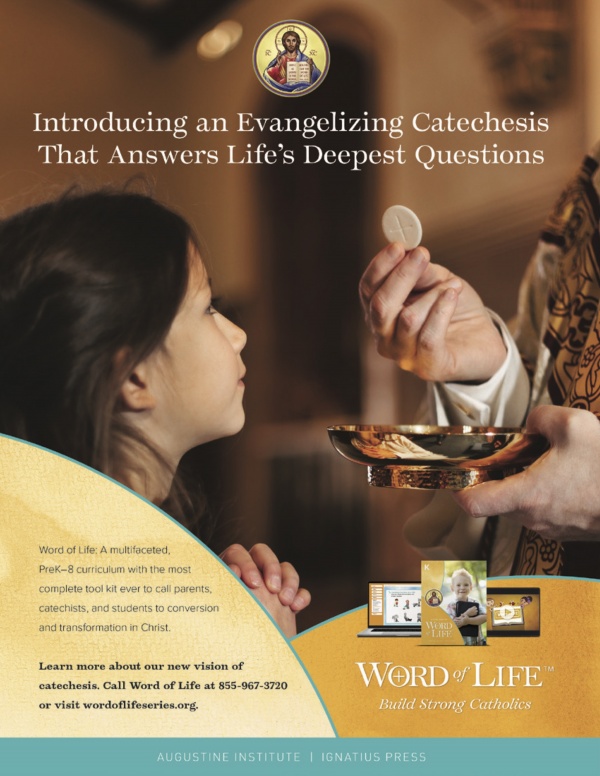Catholic Schools: Catholic High School Liturgy: A “Faithful Presence Within”
As another Holy Day of obligation rolls by, the question arises once again about the wisdom and sustainability of current Mass provision in our Catholic schools in Scotland. In our Cathedral parish here in Motherwell, we have three Sunday Masses, but between us as clergy we normally celebrate eight Masses on Holy Days, mainly in school settings, with varying degrees of enthusiasm and participation on the part of pupils. What is the point? Are we (as is often argued) sacramentalizing pupils who have never been evangelized, never mind catechized? In addition, as Catholic schools worldwide also become increasingly multi-faith—with, for example, 20 percent of non-Catholic pupils in Catholic schools today in the U.S. compared with 5 percent in 1972—is compulsory Mass attendance responding to the spiritual needs of all pupils?[1] And how can we strike a balance between the school’s responsibility to celebrate liturgically and the freedom of individual members to either embrace or opt out of such celebrations?
[1] National Catholic Educational Association (2022) Data Brief: 2021-22 Catholic School Enrollment, 1. https://images.magnetmail.net/images/clients/NCEA1/attach/Data_Brief_22_...
Children's Catechesis: For Freedom Christ Has Set Us Free
Diego is eleven years old. For years he has received religious formation through the Catechesis of the Good Shepherd (CGS) in a carefully prepared environment for the religious life of children called an atrium. He is working with a material known as the “Unity and Vastness of the Kingdom of God,” a timeline that takes a long and essential view of the history of salvation. Diego ponders the moment in this history when God says, “Let us make humankind in our image and likeness” (Gen 1:26). The catechist asks: “What do you think that means?” Diego never answers immediately. After a few minutes, he says, “It means we are able to live the Maxims.” Then, he brings over the box of “The Maxims of Jesus.”[1] This material consists of twelve wooden tablets, each holding a scripture verse of Jesus’ moral announcements. Under the words of Genesis, he places some of these Maxims:
- “. . . be perfect, just as your heavenly Father is perfect.” (Mt 5:48)
- “I give you a new commandment: love one another as I have loved you” (Jn 13:34)
- “You shall love your neighbor as yourself.” (Mt 22:39)
While Diego has not yet studied the Catechism of the Catholic Church, he is living what it teaches: “Freedom is exercised in relationships between human beings. Every human person, created in the image of God, has the natural right to be recognized as a free and responsible being. All owe to each other this duty of respect. The right to the exercise of freedom, especially in moral and religious matters, is an inalienable requirement of the dignity of the human person” (CCC 1738).
In the atrium, Diego is “recognized as a free and responsible being” and is given the time and the space needed for him to exercise that freedom. It is his response to being called by name by his Good Shepherd, Jesus Christ, who “loves you; he gave his life to save you; and he is now living at your side every day to enlighten, strengthen and free you.”[2]
[1] The Maxims of Jesus are key announcements from Jesus found in the New Testament that provide guidance on living in relationship with God.
[2] Francis, Evangelii Gaudium, no. 164.
Children's Catechesis: Seasons of Faith – Sharing the Liturgical Year with Young Children

Among the five essential tasks of catechesis, the 2020 Directory for Catechesis mentions “initiating into the celebrating of the mystery.”[1] This task includes teaching learners “to understand the liturgical year.”[2] In the simplest of terms, the liturgical year is the way in which the Church tells time. It unites the Western Catholic Church and provides a framework for us to connect with salvation history as we contemplate our own walk with God.
The themes we find as we experience and contemplate the liturgical year are familiar to us in many aspects of our lives. In Advent, we experience a period of darkness and a promise of light to come. Christmas is a time of joy and hope, an experience of promises fulfilled. Ordinary time is so named because of the ordinal numbering of weeks. Following the liturgical seasons of Advent and Christmas, we begin with the first Sunday of Ordinary time, then the second Sunday, and so on. So it is called ordinary because the weeks are ordered, not because this season is plain or boring. Ordinary time can connect us to those everyday moments of life. This time provides opportunities to find small joys and reflect on everyday things for which we are thankful. Lent is a time in which we might contemplate a crossroads in our lives. Here, we pause for self-examination and take stock of areas in our lives in need of reform. We do penance for those times in which we have fallen short. At Easter, we are aware of new beginnings as we celebrate the Resurrection. At Pentecost, we increase our awareness of the fire of the Holy Spirit as we open ourselves up to the movement of God in our lives.
All these themes are found in the story of salvation history that we explore through the liturgical year. They are also universal to each person in the course of daily life—we experience darkness and hope, death and new life, and look for joy in ordinary moments. What a wonderful gift we have in the liturgical year as a temporal context for our faith and a vehicle by which we can contemplate the essence of human existence. How can we pass this gift along to our youngest learners?
Advent at Home: Five Practices for Entering into the Season
 Most Catholic parents are so far removed from a rich Catholic culture that living a liturgical season—let alone the liturgical year—can seem impossible.
Most Catholic parents are so far removed from a rich Catholic culture that living a liturgical season—let alone the liturgical year—can seem impossible.
Children's Catechesis: Theology of the Body for the Very Young
In the book Speaking the Truth in Love, Dr. Petroc Willey offers a triadic framework for transmitting the faith: the heart, head, and hand, where hand is the process of “handing on” the Deposit of Faith.[1] I hope he won’t mind if I borrow this triadic framework and modify it slightly for teaching St. John Paul II’s theology of the body (TOB) to the very young by changing “hand” to refer to “hands-on teaching,” i.e., manipulatives. In this way, all three—head, heart, and hand—can come together in forming the young child’s Trinitarian-Catholic identity.
A Mini-Scripture Study
Where did my inspiration for teaching young children TOB arise from? It started with my son, Michael, at age ten. We were sitting at the dinner table, and the parental catechist in me decided to take him through a mini-Scripture study of Genesis 1 and 2. We started with Genesis 1:27 about being made in God’s image and likeness; then continued with Genesis 2:7, on imaging God by being both body and spirit; and capped it off with Genesis 2:23–24 with an explanation of how we’re made for union and communion through a gift of self.
His ten-year-old eyes immediately told me I’d overshot his ability to comprehend. So, I grabbed what I had at hand, my hands, and created my first TOB visual aid: I put my hands together in a prayer position and said, “We’re made from one nature” and then I dropped both hands down with two fingers protruding from each hand (like two legs) “embodied in two ways”, then interlaced my fingers while saying “for the purpose of union and communion” and turned my hands outward as if giving a gift and said with a triumphant finish “through a sincere gift of self!” By George, I think he got it! I’d “handed on” a critical portion of the faith in a seminal way to a ten-year-old.
Twenty-four years later, I’ve graduated from merely using my hands (although I’ve taught thousands of people this “gift formula” using the hand motions) to a bevy of visual aids that can double as manipulatives for preschool age. And my favorite among them are gift bows. But just how young can we begin to teach TOB? Enter my one-year-old granddaughter, Sutton.
Why Beauty Matters for Catechesis and Catholic Schools
In modern culture, relativism reigns supreme. Consequently, the transcendentals of truth, goodness, and beauty no longer seem to transcend beyond the subjective whims of every autonomous individual self. Truth is a matter of one’s opinion. Goodness is relative to each person. Beauty is a matter of personal preference.
Catechists and Catholic educators have been given a great opportunity to lead the young people entrusted to their care to encounter objective truth, consistent moral laws that lead to the flourishing of goodness, and to appreciate authentic beauty. Although the three transcendentals are inseparable, I would like to focus on the role of beauty in teaching, evangelization, and formation.
Bishop Robert Barron frequently exhorts the faithful to “lead with beauty.” Images are powerful means of conveying both the truth and distortions of the truth. Images have been used well to market products and lead people astray into ideology. The Church has employed the use of sacred art to convey the truth in a powerful and formative way. In the introduction to the Compendium of the Catechism of the Catholic Church, then-Cardinal Joseph Ratzinger explains the rationale for using sacred images within the Compendium:
Images are also a preaching of the Gospel. Artists in every age have offered the principal facts of the mystery of salvation to the contemplation and wonder of believers by presenting them in the splendor of color and in the perfection of beauty. It is an indication of how today more than ever, in a culture of images, a sacred image can express much more than what can be said in words, and be an extremely effective and dynamic way of communicating the Gospel message.[1]
The beauty within art, architecture, music, and film is a visible manifestation of a truth being communicated by the artist. Beauty, when used well, can lead the faithful to encounter the face of Christ the Incarnate Word.
In order to renew catechesis and Catholic schools with beauty, first we must discuss the definition and nature of beauty. Second, we need to examine what role beauty plays in our lectures, presentations, and classrooms. Finally, we must work toward greater manifestations of beauty within the liturgy.
AD: St. John Bosco Conference for Evangelization & Catechesis, July 11-14
To learn more or to register for the St. John Bosco Conference, click here or call 740-283-6315.

AD: Come, Follow Me Bi-lingual Training Conference, June 10-11, Nashville
Click here to register for this bi-lingual training in the Come, Follow Me method of catechesis.

AD: New Word of Life Series
Learn more about Word of Life's evangelizing catechesis at wordoflifeseries.org or call 855-967-3720.

Encountering God in Catechesis
Several years ago, I was working as a parish Coordinator of Youth Ministry, and one of my responsibilities was teaching a high school religious education class. The class was arranged by the parish DRE and met as part of her programming each Wednesday night. There was no set textbook or program. We had a wide range of topics and materials available, and we were able to move as the class needed. The class was comprised of a diverse range of students with varying backgrounds and levels of catechetical formation. Mid-year, a new family moved to the parish. The parents only spoke Spanish, and they had two sons in high school who had very little formal religious education.
The older of the sons was in eleventh grade. He didn’t speak much. I’ll refer to him as “Frank.” You could tell by what few personal stories he shared that Frank’s life was a hard one. He lived in a bad neighborhood. He adored his parents, who were hard-working, but recognized that they were consumed by the preoccupation of the family business and were also not as devout as they expected their children to be. The boys completed that school year and came back the following fall.


